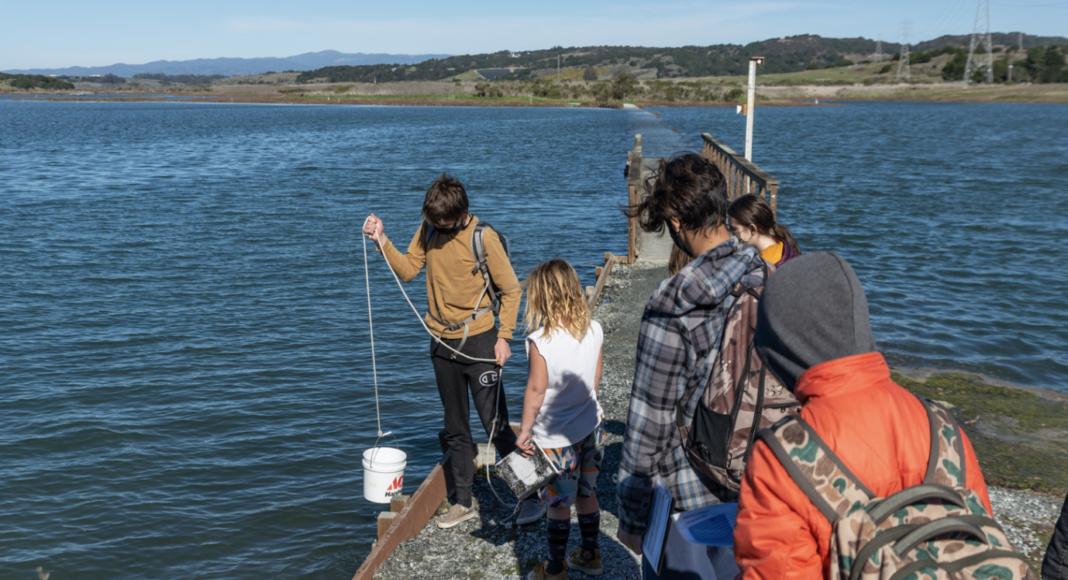On World Wetlands Day, students from Mount Madonna School in Watsonville helped sample water and learn about the slough ecosystem.
Peggy Foletta, the education specialist at the reserve, showed buddy pairs of fifth-and ninth-graders how to measure salinity, pH, wind speed, water transparency and tide period.
Their measurements will go to the Global Learning and Observations to Benefit the Environment (GLOBE) program. The NASA-sponsored program involves over 30,000 schools around the world.
Foletta, who used to be a schoolteacher, now trains teachers for the program. She says collecting the data helps students connect to their surroundings and the scientific process.
“It makes them better-informed citizens to make important decisions about the environment,” she says.
For the older kids, it also provides a chance to mentor younger students.
“I think when you teach a concept is when you really know it,” says Nicole Silva Culbertson, a middle and high school science teacher at Mount Madonna. “And so it’s a fun way for the kids to be outside and to really see how science works.”
The slough is a particularly important ecosystem for students to learn about.
“It is a nursery for a lot of wildlife that people eat, for example,” says Foletta. “Fifty-five% of the fish caught in Monterey Bay—this is their nursery.”
Elkhorn Slough also provides habitat for hundreds of species of birds, mammals and amphibians and helps buffer the coastline from storms.
More than 90% of the wetlands in California have disappeared to agriculture, development or other disturbances. In order to keep Elkhorn Slough from a similar fate, scientists and nonprofit partners are working on a large-scale restoration.
To learn more about the restoration efforts and educational programs, visit elkhornslough.org













